‘Fig trees are the undisputed superheroes of the arid landscape’ – discover the best drought-tolerant fruit trees
6 of the best drought-tolerant fruit trees that can thrive with minimal water
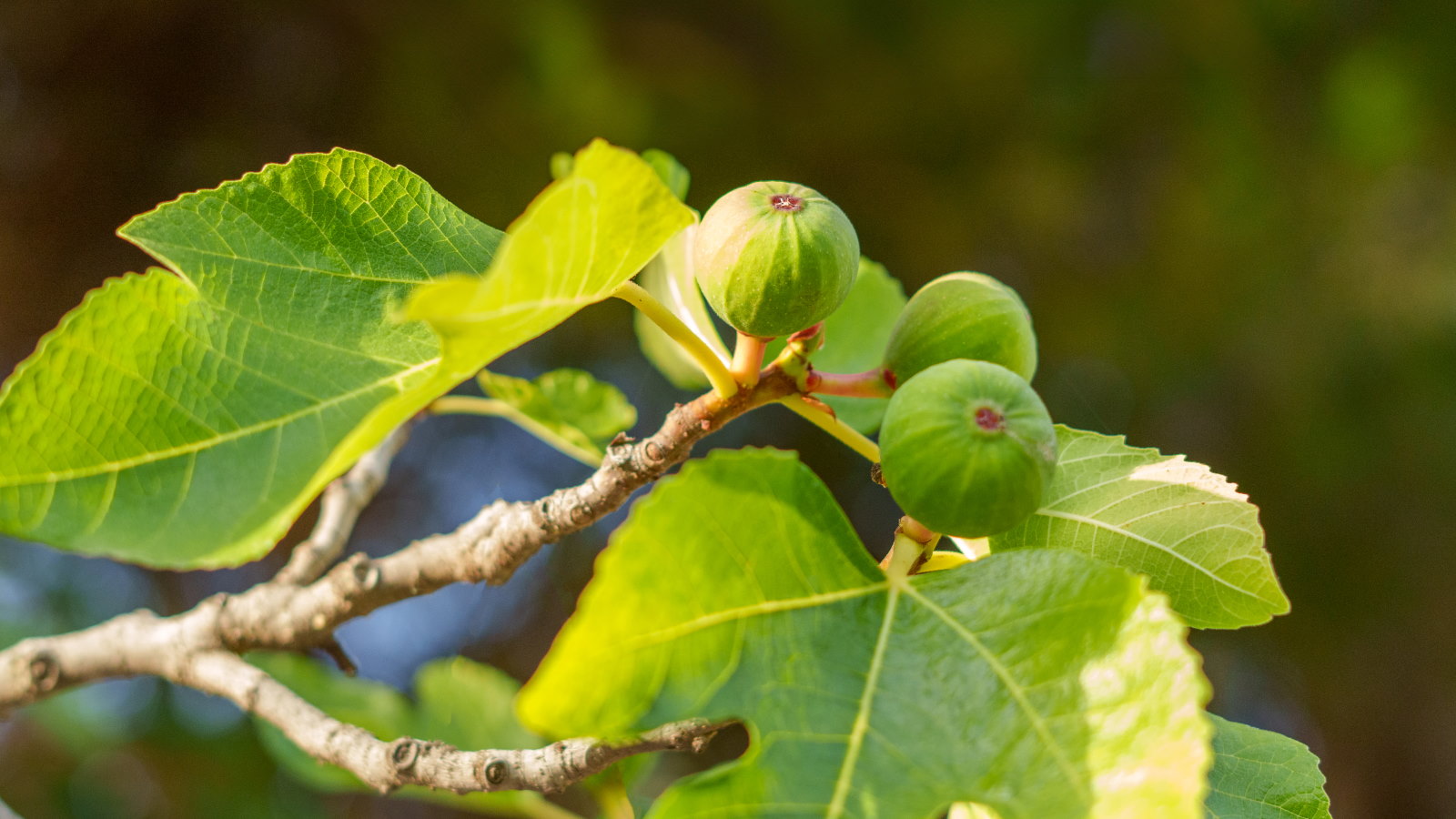

What can be better than picking homegrown fruit off a backyard tree? They always taste far superior to any fruit from the grocery store. If you aspire to grow your own fruit, there is a range of trees to plant in any backyard - will you opt for one of the classic favorites, or something a bit more tropical?
If you live in a warmer climate, you may be concerned about how much watering any backyard fruit tree will need during the hot summer months. Thankfully, there is a great selection of drought-tolerant fruit trees that are well-suited to arid climates and require limited watering.
The likes of figs, pomegranates, olives, persimmon, loquat, and jujube can all survive periods of drought once established. I'll deep-dive into these top drought-tolerant fruit trees and get tips from fruit tree experts for watering and caring for each, so you can find which is best for your yard.
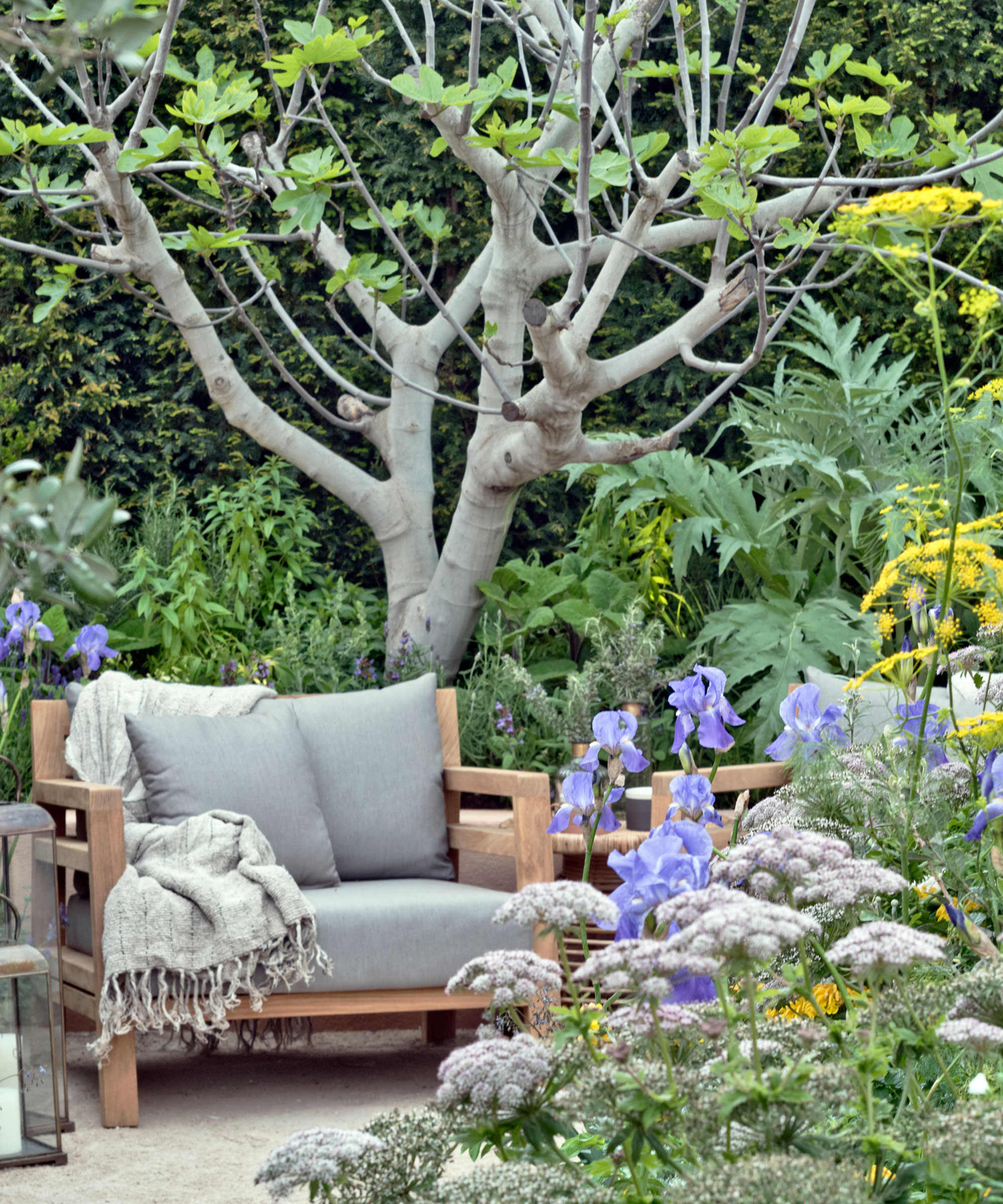
When can a fruit tree be considered drought-tolerant?
It can take two to three years from planting a fruit tree until it can be considered truly drought-tolerant. Any fruit tree needs regular watering to establish and develop a strong root system. Once established, the fruit tree can survive on natural rainfall and occasional watering during prolonged dry periods. If you grow fruit trees in pots, they are more vulnerable in dry weather and will require regular deep watering and close attention to ensure the soil does not dry out.
1. Fig
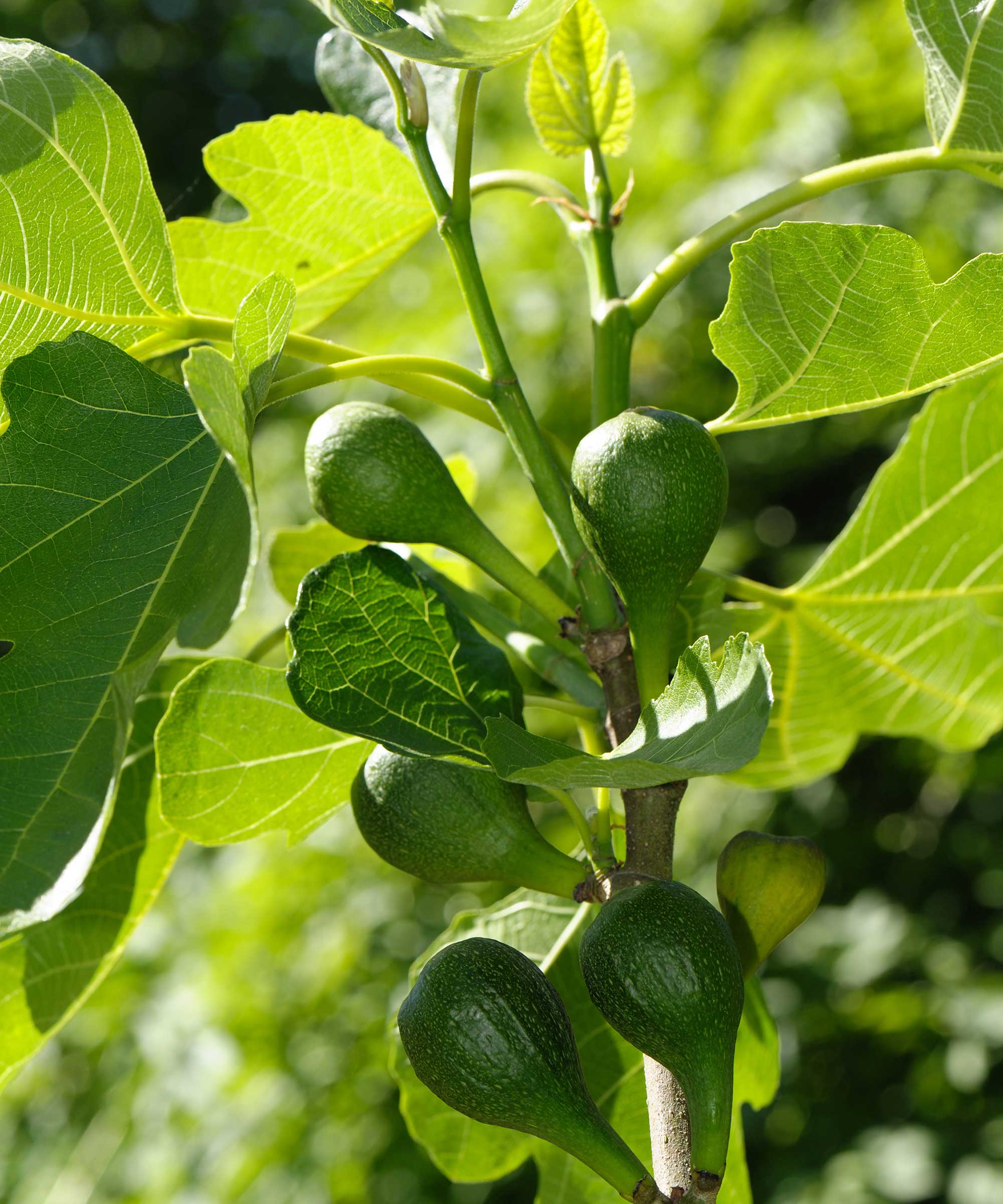
- Size: 10-30 feet
- Type: Deciduous
- Suitable for: US hardiness zones 7-11
- Location: Sunny and sheltered
‘When it comes to drought-tolerant fruit trees, fig trees are the undisputed superheroes of the arid landscape,’ says Maureen Wright, an expert at Fast Growing Trees. ‘Fig trees are exceptionally drought-tolerant, making them a popular choice for gardeners in dry regions. They can handle periods of low water availability, though they do appreciate occasional deep watering to produce the best fruit.’
Fig trees are native to the Mediterranean and western Asia and ideal trees to incorporate if you want to create a Mediterranean garden at home. The fruit trees can thrive in warm summers, while there are also varieties of fig trees that are hardy and can survive colder winters.
Even though fig trees are drought-tolerant, they will benefit from a deep soak every few weeks in dry spells to help get the fig trees to fruit well. Once a tree is established, you should start getting a harvest of figs in late summer to enjoy in sweet or savory dishes.

Maureen has been a Certified Oklahoma State University Master Gardener since 2012 and is working on her ISA Arborist Certification. Her background in social work led her to an interest in horticultural therapy training and she spends a lot of her time working with at-risk youth and adults working on community garden projects.
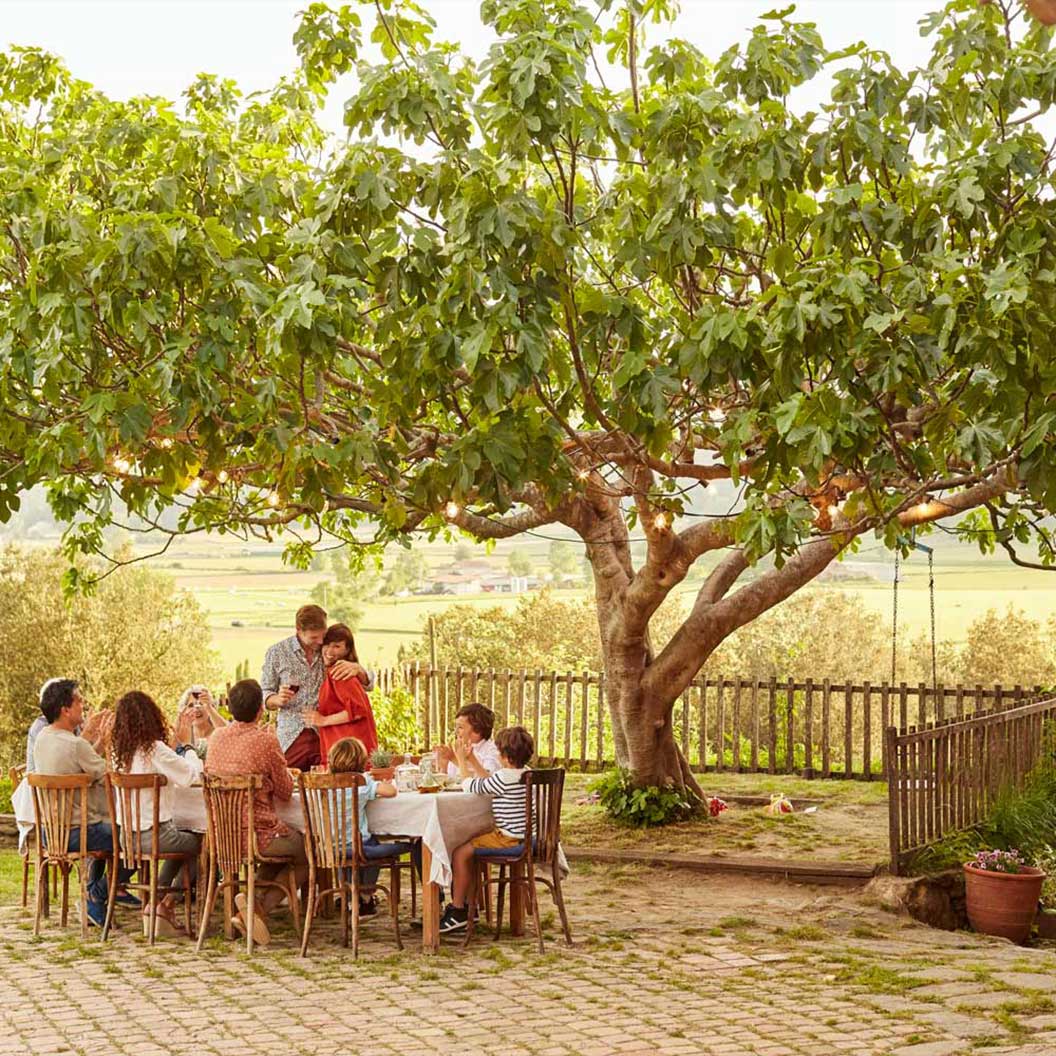
A Brown Turkey Fig can give you two crops a year, one in late spring or early summer and the main harvest in early fall. It is a variety that can also endure winter colds
2. Pomegranate
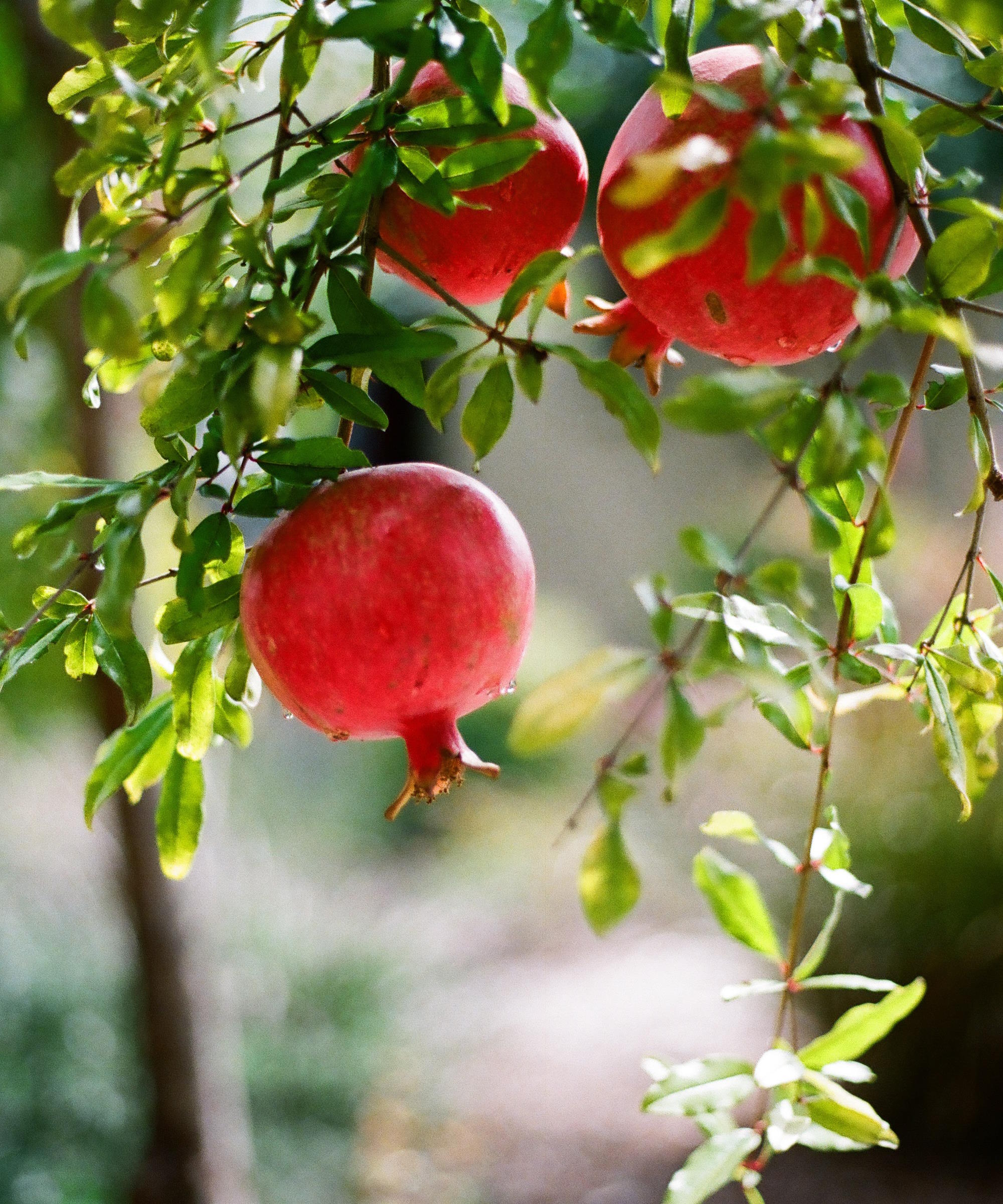
- Size: 10-16 feet
- Type: Deciduous or evergreen in warmer climates
- Suitable for: US hardiness zones 7-11
- Location: Full sun
Pomegranates are exotic fast-growing fruit trees that are frost-hardy and thrive in hot and dry conditions. The trees are grown extensively throughout East Asia, North Africa, and the Mediterranean for their distinctive rounded fruits packed with vitamins, minerals, and antioxidants. Pomegranates want lots of sunshine and you can get dwarf varieties if you are after a fruit tree for a small garden.
‘Their natural adaptation to arid climates makes them a reliable choice for water-conscious gardeners,’ says Maureen Wright. ‘Regular, deep watering during the first few years helps establish their root system, but once mature, pomegranates require minimal irrigation.
‘In addition to their drought resilience, pomegranates are also relatively low-maintenance, adding to their appeal for those looking to conserve water without sacrificing fruit production,’ adds Maureen.
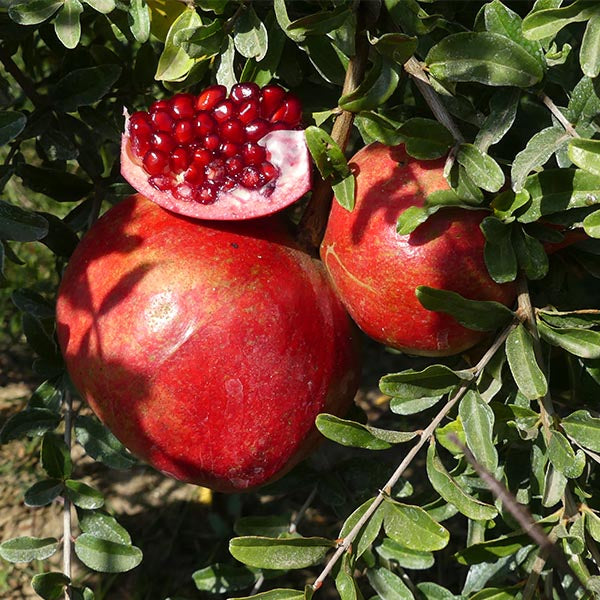
Desertnyi is a selection from the Turkmenistan collection of world-famous wild pomegranates. Desertnyi has a well-balanced flavor with a delectable hint of orange.
3. Olive

- Size: 20-30 feet
- Type: Evergreen
- Suitable for: US hardiness zones 6-11 (dependent on variety)
- Location: Full sun
Olive trees are native to the Mediterranean and are ideally suited to hot and dry conditions. There are hundreds of cultivars of olives, with some olive trees more drought-tolerant than others, but all are tolerant of dry conditions once established.
Olive trees have evolved throughout their traditional habitats across Southern Europe to survive long periods without water. Their silvery-green leaves reflect the sunlight, which reduces water loss.
Katie Brines from Starks Bro’s Nurseries & Orchards claims: ‘Olive trees are very drought-tolerant and thrive with minimal water once established. For best results, water deeply as opposed to frequently, especially during the first 1-2 years to support their resilience and deep root growth.’
Caring for the trees is simple, though you will need to prune olive trees. This includes removing suckers, pruning out dead, damaged, or diseased branches, and creating a neat shape for the tree.
See the full range of olive trees at Fast Growing Trees.

Katie Brines is a gardener and grower, as well as being part of the small marketing team at Stark Bro's. The nursery has provided quality fruit trees, nut trees, berry plants, and garden plants across America for over 200 years.
4. Persimmon
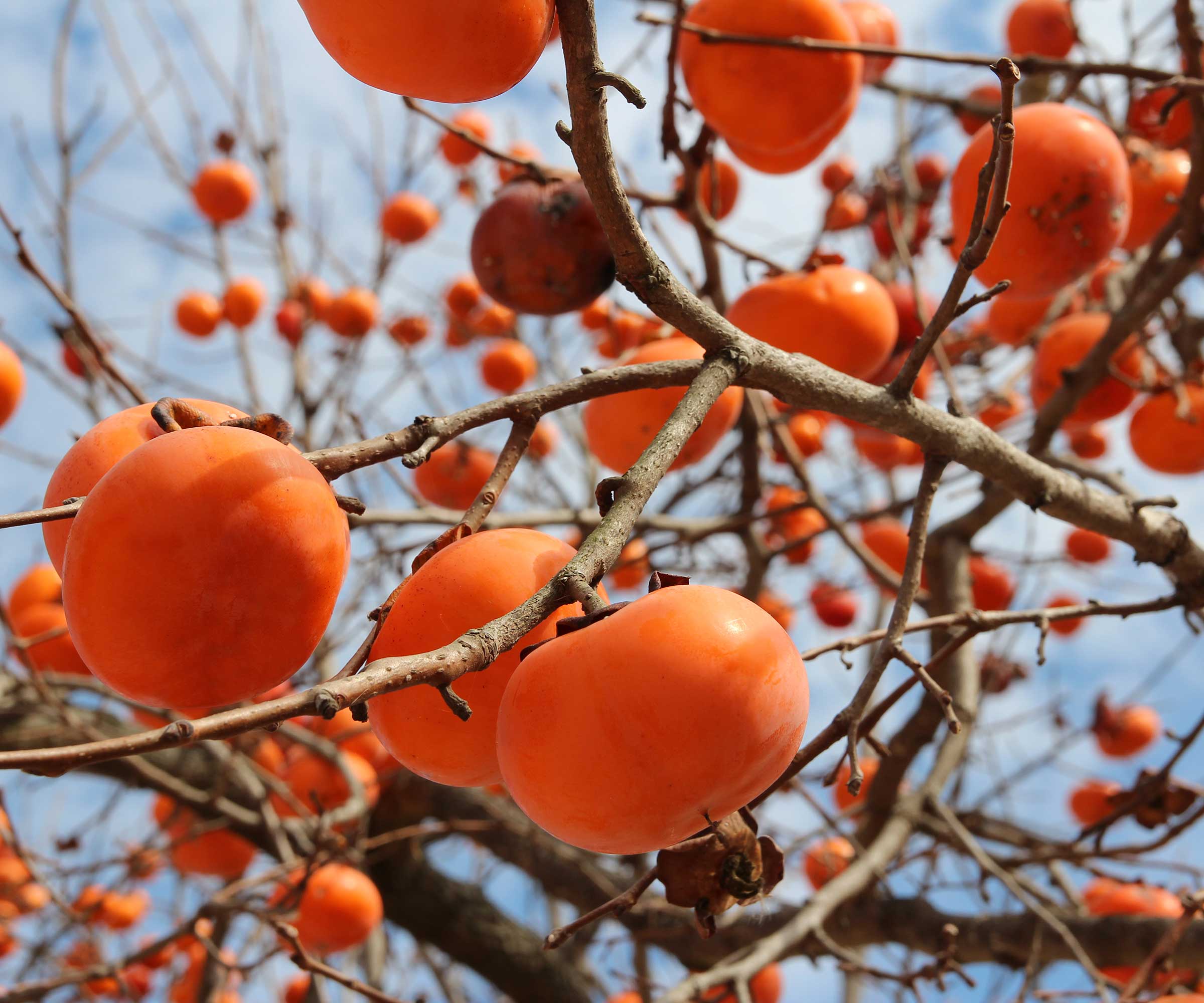
- Size: 15-30 feet
- Type: Deciduous
- Suitable for: US hardiness zones 7-11
- Location: Full sun or partial shade
A persimmon is a slow-growing tree that produces shiny and sweet fruit shaped like pumpkins. They can be yellow, orange, or red. Persimmons can make a unique addition to a backyard and there are dwarf varieties so you can grow a persimmon tree in a container.
Maureen Wright claims the persimmon tree has two distinctive characteristics that help make it a drought-resistant fruit tree. She says: ‘Its ability to thrive in arid climates stems from its deep-reaching roots that tap into underground water sources. Its waxy leaves also reduce water loss through transpiration, enabling it to withstand long periods of drought.’
Persimmon trees are fairly straightforward to grow and self-fertile varieties make it easy to get a crop. You can buy potted plants, such as the Fuyu persimmon tree available at Fast Growing Trees, or if you fancy an experiment, and have patience, you can try planting persimmon seeds to grow your own.
5. Loquat
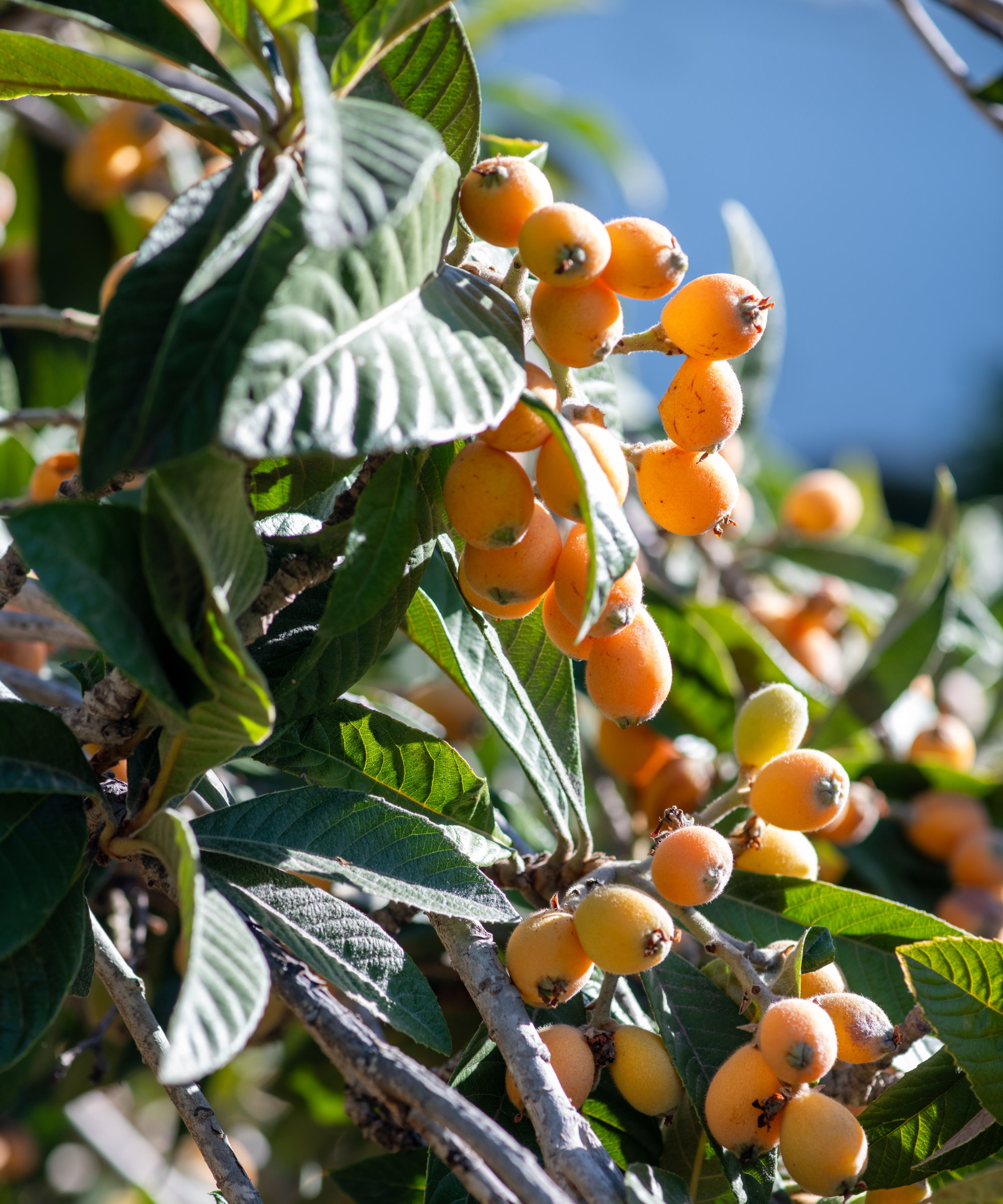
- Size: 25-30 feet
- Type: Evergreen
- Suitable for: US hardiness zones 8-11
- Location: Full sun
Loquat trees are native to Southern China and produce small, sweet, pear-shaped fruit in spring. The fruits are similar to apricots but with a hint of citrus and follow the cream-colored, sweet-smelling flowers of late fall and early winter.
Loquat trees love warmth and can add a tropical garden feel to any backyard. Though they can grow large, you can manage the size with regular pruning.
Katie Brines says that, while loquats are ‘somewhat drought-tolerant once established’, they will perform at their best with regular watering during the dry season. She recommends mulching around the tree’s base ‘to help retain soil moisture’ and stop the soil from drying out during extended dry periods.
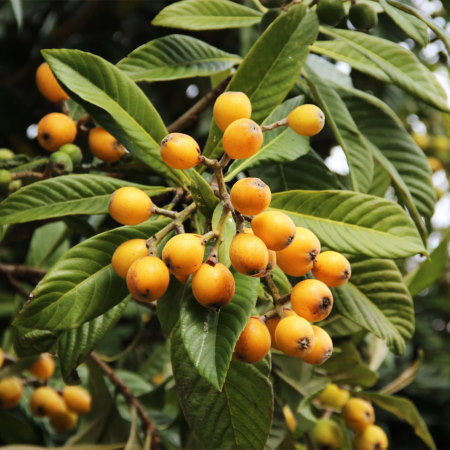
A loquat tree with shiny, thick leaves with sawtooth edges and delicate white flowers. Loquats thrive in full sun and do well in partial shade
6. Jujube
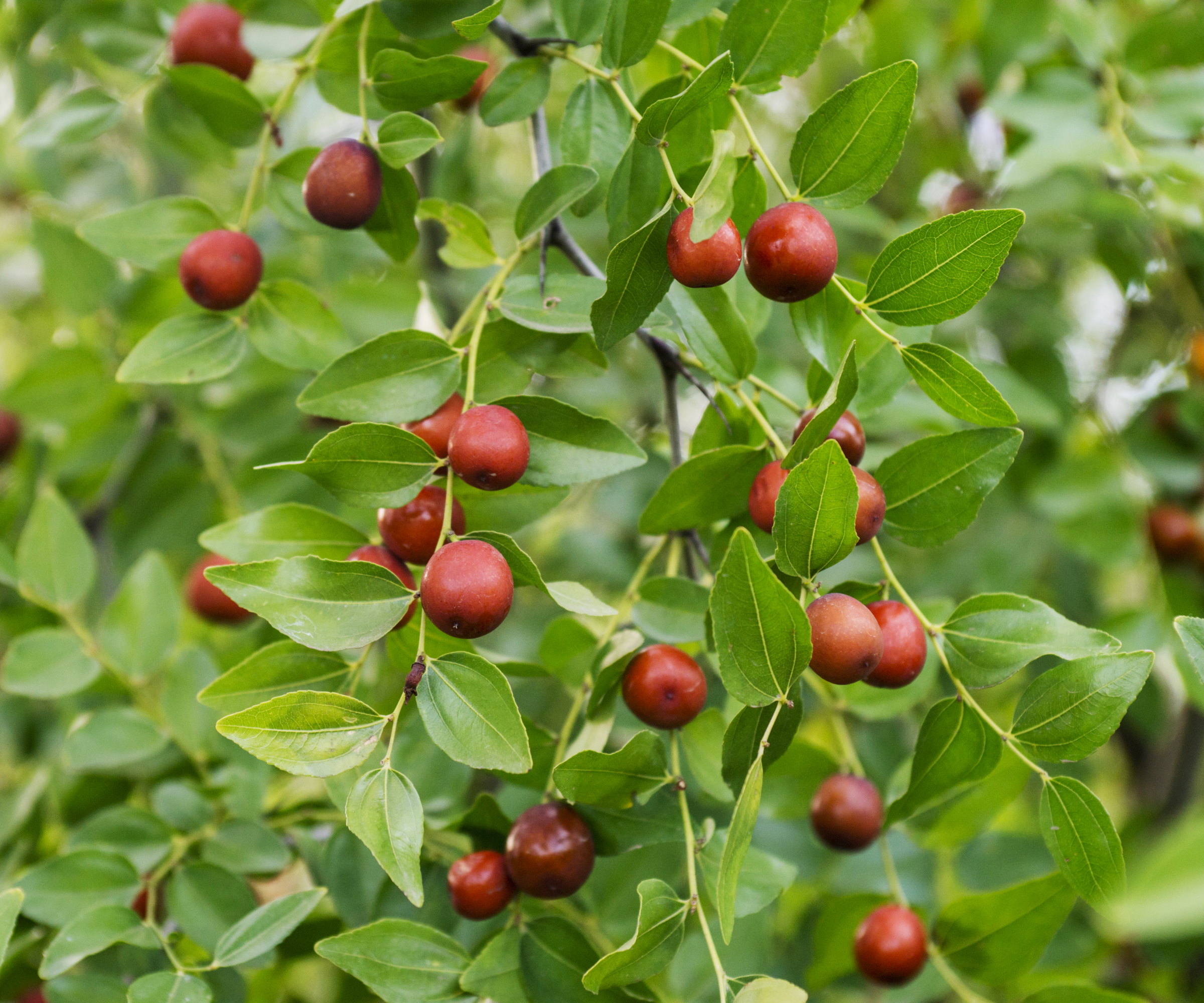
- Size: 10-20 feet
- Type: Deciduous
- Suitable for: US hardiness zone 6-11
- Location: Full sun
Jujube trees are also known as Chinese dates and they have been grown in China for thousands of years. They are common throughout Asia and the Middle East and as such these versatile trees can thrive in both tropical and temperate climates. Indeed, jujube trees are frost-hardy, with some varieties hardy down to -10-20°F.
The small, egg-shaped fruits are sweet and tart, with a flavor similar to apples, and their color transforms from green to deep red when ripe. On top of the unique fruits, jujubes produce fragrant yellow flowers in late spring and early summer. The trees want to grow in a sunny spot with a well-draining soil type. A recommended type is the 'Honey Jar' jujube, available at Nature Hills, which can tolerate both extreme cold and extreme heat.
FAQs
What is the most drought-tolerant apple rootstock?
Commercial apple trees are usually drafted onto rootstocks to control their growth and help make the fruit trees suitable for backyards. The rootstocks primarily dictate the size of the tree, but they can affect how an apple tree you plant grows in certain conditions. The MM111 rootstock is a vigorous stock that can grow trees up to 16-25 feet tall. It is also regarded as the best rootstock to help trees tolerate drought conditions.
If you are seeking alternative drought-tolerant trees, there are also nut trees that can survive dry periods with limited water. In particular, almond trees, originating from the Mediterranean and Middle East, are particularly drought-tolerant and can reward you with flowers and harvests without laborious watering during summer.
Sign up to the Homes & Gardens newsletter
Design expertise in your inbox – from inspiring decorating ideas and beautiful celebrity homes to practical gardening advice and shopping round-ups.

Drew’s passion for gardening started with growing vegetables and salad in raised beds in a small urban terrace garden. He has worked as a professional gardener in historic gardens and specialises in growing vegetables, fruit, herbs, and cut flowers as a kitchen gardener. That passion for growing extends to being an allotmenteer, garden blogger, and producing how-to gardening guides for websites. Drew was shortlisted for the New Talent of the Year award at the 2023 Garden Media Guild Awards.
-
 7 expert-approved painting hacks to minimize clean up – to make an already exhausting task easier
7 expert-approved painting hacks to minimize clean up – to make an already exhausting task easierAvoid a backbreaking clean-up after your next painting project with advice from the professionals
By Chiana Dickson
-
 Gwyneth Paltrow's quiet luxury kitchen is so beautiful, we almost overlooked her ultra-smart cabinets – they make the use of 'every inch' of storage space
Gwyneth Paltrow's quiet luxury kitchen is so beautiful, we almost overlooked her ultra-smart cabinets – they make the use of 'every inch' of storage spaceThe Goop founder makes use of dead space in her kitchen with customized cabinetry that reaches to the ceiling, providing ample storage
By Hannah Ziegler